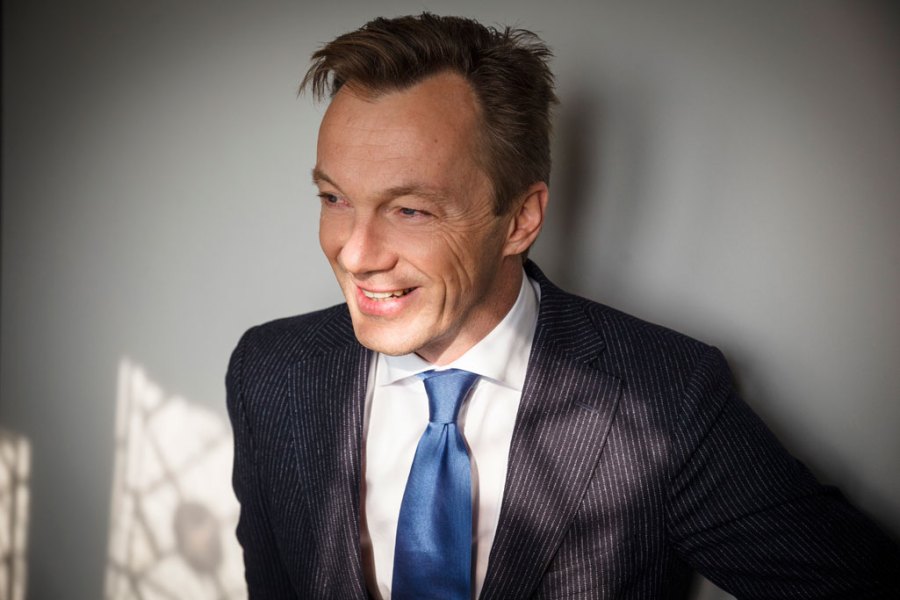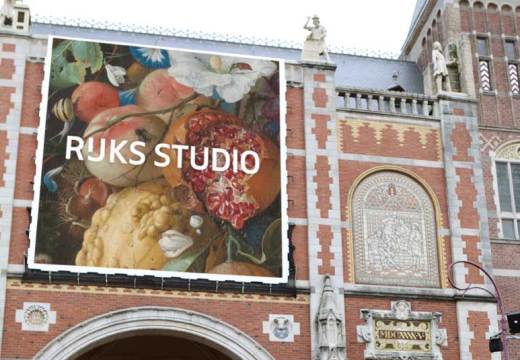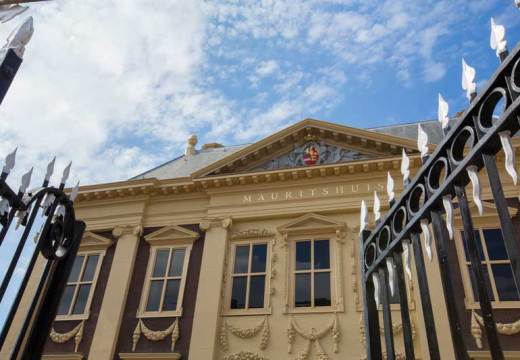Wim Pijbes steps down as director of the Rijksmuseum this summer to lead the new, private Museum Voorlinden in Wassenaar, near The Hague, from 1 July. We spoke to him about his legacy at the Rijksmuseum – and his hopes for the future
What can we expect from the Museum Voorlinden?
The museum comes out of what I think is one of the most wonderful collections – that of Mr Joop van Caldenborgh, who has been collecting for decades. It will open in September, as a new institution, in a new building. I think it will be quite a surprise to the general public as well as to professionals. We’ll have some works permanently on show – a large Richard Serra, a beautiful James Turrell…and at the same time we will have changing displays of the collection, which is focused on international modern and contemporary art.
How visible has the collection been before now: has it toured widely?
It has been exhibited in the Kunsthal Rotterdam, and the Museum Boijmans van Beuningen in the last 10 years. And the collection has loaned items to museums worldwide for some time – from the MoMA to regional institutions.
Have you worked much with Joop van Caldenborgh before?
Yes, he’s very active not only as a collector but also as a former board member of several museums in the Netherlands – plus he’s known as a major benefactor of several cultural institutions. He is a fanatic collector with very good taste. In the end he decided not to donate his collection to an existing museum but to buy a large plot of land and to build his own, as a kind of dream come true.
It’s quite a change for you, to move from working in a state collection in the capital, to a private collection in a rural setting…
Yes, it’s the complete opposite! This is new, and private, and while I wouldn’t call it a small museum, it’s small compared to the Rijksmuseum – and it’s entirely contemporary. Another thing that is very attractive in my view is that it is not in a city: as you say, it will be near the coast, surrounded by dunes and woods and beautiful nature. So that will provide an extra element that attracts people. You can come for the art, and stay for the nature, or vice versa.
How far along were the plans for the museum when you came on board?
Well the funny thing is that actually I was one of the board members. As we were thinking about the profiles of future staff members, including the director, I thought to myself – why not do it myself?
You saw the Rijksmuseum through a major renovation project that has turned out to be a great success. What are you most proud of?
Anything I did in the last eight years was, of course, alongside a lot of curators and colleagues. The most important thing is that the museum is open. That sounds simple enough, but you have to remember that when I came on board the building was closed, and it was in quite a sorry state of affairs. Now it is open, and not just the building. We’ve opened up the collection by using a very forward-thinking model of what the internet can do for a museum. I always say that my role as director of the Rijksmuseum was to open it up: open the building, open up the attitude of the museum; and open the collection to the world.
You’ve been very vocal about copyright and providing open access to images. Do you think that other museums will follow your lead?
Several museums already have. If you look around, you realise that almost any work of art already is on the web, whether you like it or not. If you search for The Milkmaid by Vermeer, for instance, you find thousands and thousands of them. These images are sought after and they are popular – and they are used for all sorts of commercial purposes. It’s best to embrace that, and give out the best images available, for free, because at least then you know that the highest quality images of your collection are available to the world. Better to embrace it than to try to ignore it – that’s the whole policy.
And there’s one more thing: we’re talking about the images and not about the artworks themselves. The original, the authentic object, is still in the museum. So I don’t mind if there is imagery all around. The real object gets more significant and more important – but to see that you have to go to the museum, and nothing will change that.
At the Museum Voorlinden you’ll be working living artists, which brings a whole new set of issues…
Yes of course, the legal position of living artists is a different matter. But at the same time the whole discussion concerning copyright is changing. We’ve already seen it in the music industry, for instance, where they have really embraced a different business model. The CD is over, and streaming has taken its place – but even more than that, live performance is what it’s all about nowadays. I think something similar will happen in the museum world. Books, like CDs, are dying things, whether you like it or not. The internet will take over, but more importance will also be given to the museum. We’re already seeing that: museums are getting more and more popular every year, and I think that’s a good thing.
Will you miss the Old Masters?
Yes, but it’s time for a change. And to see the Old Masters I can go to any large museum in the world – or small museum for that matter. They’ll still be around.
What do you hope to see from the Rijksmuseum in the future: any advice for your replacement?
It’s up to the new director to decide. I’m happy to leave the Rijksmuseum at this moment: it’s successful in terms of visitor numbers; financially we’re healthy; the collection looks stunning; we were lucky to make some major acquisitions over the years. So the museum is looking great and doing great, and of course I hope that will be continued. I leave it with a very happy feeling that things are going well – it’s a good moment to hand it over to someone else.
Are you optimistic about the state of the museum sector in the Netherlands, and indeed further afield?
Yes, I’m an optimistic person! In terms of museums, I think there are several reasons to be optimistic. As I say, the public is growing and there is a demand for authentic, beautiful objects and experiences – and a museum can offer all that. So yes – as centres for beauty, history and authentic, important objects – museums will have a strong future.
Is the area around Voorlinden a tourist destination already, or are you hoping it will become one?
I hope that many visitors will come, and that Voorlinden will be successful as a museum – but on a different scale, of course, than the Rijksmuseum. The museum is close to the Mauritshuis and the Gemeentemuseum Den Haag – and it’s also close to Schiphol airport so it’s within reach of an international audience.
Are you hoping to collaborate with these and other museums?
Yes, definitely. The opening exhibition will be about Ellsworth Kelly, and I’m happy and proud that we secured very important loans from several large institutions. The building is looking stunning already. It’s a beautiful white box building with brilliant daylight filtered through a newly designed unique perforated roof. It will surely be a pleasure to see the art in that very crisp and clear sort of light that you get so near the cost. It’s the same light that has inspired Dutch Masters for centuries. It’s really something spectacular to see.
The Museum Voorlinden, Wassenaar, opens in September.
Unlimited access from just $16 every 3 months
Subscribe to get unlimited and exclusive access to the top art stories, interviews and exhibition reviews.














![Masterpiece [Re]discovery 2022. Photo: Ben Fisher Photography, courtesy of Masterpiece London](http://www.apollo-magazine.com/wp-content/uploads/2022/07/MPL2022_4263.jpg)
Why are fathers so absent from art history?